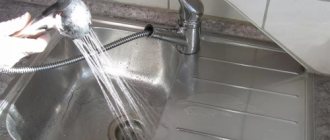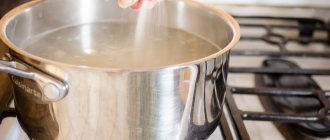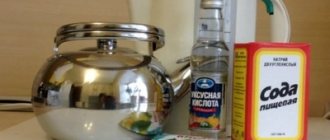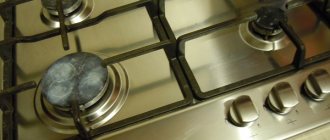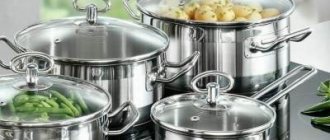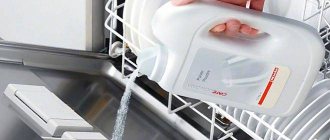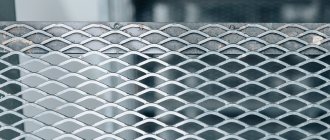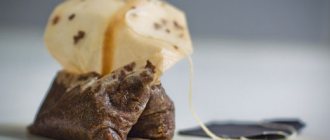Stainless steel is very often used in the kitchen. It is used to make dishes (pots, spoons, etc.), sinks, interior elements (bars, stands), hoods, stoves, etc. This is due to the fact that the metal is very strong, durable and has good performance characteristics. Stainless steel, thanks to its chrome plating, is very resistant to various adverse influences and corrosion. It looks great, the shine is pleasing to the eye. However, it easily loses its appearance if not properly cared for. How to remove stains from stainless steel if it has lost its appearance?
Cleaning products for stainless steel dishes
There are many ways to clean stainless surfaces. You can buy a special cleaning composition at a hardware store or use folk remedies.
Special washing and cleaning compounds
Today, consumers are offered a fairly large assortment of household chemicals that can effectively cope with a wide variety of stains on stainless household items. Experts advise choosing the most gentle and safe means.
The main advantages of special washing and cleaning compositions are time saving and efficiency. The disadvantage is that it is expensive.
Traditional methods
Here are instructions on how to quickly and easily clean stainless steel using baking soda:
- Wash the product with hot water.
- Dry with a towel.
- Cover the contaminated areas with baking soda and wait 1.5 - 2 hours. The soda can be slightly moistened.
- Wipe with a dry cloth or sponge. Rinse everything off with water and wipe dry again with a towel.
If soda does not give the desired result, then you can use the heating method. To do this, the dishes that need cleaning need to be filled with water, put on fire and brought to a boil.
After this, the product must be rearranged from the stove and 2 tablespoons of regular table salt added. After complete cooling, the stains will come off easily - just run a sponge over them.
Effective ways to clean cutlery
Unlike the easy-to-use Teflon-coated ceramic cookware, cleaning stainless steel cookware can be a real torture if you don't care for it properly. To ensure that cutlery does not lose its original appearance, there are several effective ways to clean them from stains.
- Cleaning with stainless steel cleaner. Today, the assortment of stores offers various household chemicals that help effectively clean dishes from dirt. But not all of them are suitable for stainless steel. When purchasing, choose a product with a gentle composition, without chlorine and abrasives. Use it correctly - pour it onto the contaminated surface, wait 10 to 15 minutes, remove the residue with a damp sponge and then wipe thoroughly with a dry towel. Any glass cleaner that works on the same principle will help remove fingerprints and water stains.
- Cleaning dishes with baking soda. This is one of the easiest and most effective methods, since baking soda is always available in the kitchen arsenal. With its help, it is good to remove greasy stains and unpleasant odors from the surfaces of devices. Before treating the product with soda, you must wash it thoroughly under high pressure water and pat dry with a soft towel. Then generously sprinkle soda on its surface (0.5 cups of soda per 1 tableware) and leave it like that for several hours. If desired, baking soda can be mixed with water to form a paste-like consistency. After the specified time has passed, carefully wipe with a kitchen cloth.
- Cleaning dishes with activated carbon. This method will be especially effective if you didn’t keep track of the milk and it ran away. You can wash burnt dishes as follows: put crushed activated carbon in a container, fill it with water and do not touch it for about 15 minutes. Then wash well and remove stains with microfiber.
- Cleaning dishes with vinegar or citric acid. A small amount of vinegar is poured onto a kitchen sponge and the tableware is treated. Afterwards, the container is rinsed with water and wiped thoroughly. You can soak a frying pan or pan in a vinegar solution for 15 - 20 minutes, then wash thoroughly under the tap with detergent powder. As an alternative to vinegar, you can use a prepared solution of lemon juice (1 tablespoon of citrus juice per glass of water) and gently wipe the contaminated areas with it.
- Cleaning coffee grounds. Modern housewives use coffee grounds as a cleaning agent to clean all stainless steel items. Afterwards, wash off the coffee residues with running water.
- Cleaning with a solution of office glue and baking soda. We put dirty cutlery in a large container, fill it with water and add glue and soda in the ratio: 5 liters of water - 0.5 packs of soda - 100 ml of glue. Let the dishes boil for about 20 minutes, cool and rinse under the tap.
- Cleaning dishes with heat. Fill the contaminated pan with water, bring to a boil, add 2 tablespoons of table salt and leave for a couple of hours. Then drain the water and scrub off the soaked stains with a kitchen sponge.
- Cleaning dishes with dry mustard. Add dry mustard to a bowl of warm water, wait until it is completely dissolved, and clean the surfaces with the resulting solution. To get 100% results, you can clean surfaces with an old toothbrush or a small kitchen brush.
- Cleaning dishes using folk remedies. It involves cleaning stainless steel surfaces with potato wedges or potato broth, which is prepared as a regular dish. Afterwards, serve the potatoes to the table, and immerse the contaminated dishes in the resulting broth for 20 minutes.
To clean a gas stove and other household appliances, use the same products as for cleaning kitchen utensils. Moreover, if you use them daily, then you need to wash them constantly. It is enough to use standard cleaning mixtures for washing dishes. They are gentle and will not harm the coating. Several times a week, you can wipe the surfaces with professional cleaning mixtures in the form of a cream or gel, following the instructions for their use. To care for the glossy surface, use protective oil. It will not only preserve the surface for a long time, but will also provide a hydrophobic layer that will facilitate everyday maintenance of the equipment.
To clean a stainless steel sink, experts recommend using hydrogen peroxide, which performs cleaning and disinfecting functions. You need to combine one part of peroxide with 3 tablespoons of wine vinegar and wipe the sink with this solution. The most contaminated areas and traces of greasy stains can be removed with a nylon brush or scrubber.
You can clean the sink with hot water and bleach. After closing the drain, pour water into the sink and add one cap of bleach, leave for several hours so that the resulting solution can cope with greasy stains. Then flush the water and rinse the sink with cold water.
Caring for a stainless steel refrigerator will also not require much effort if you are not lazy and regularly wipe it from dust and small debris. To do this, you will need a chemical intended for stainless steel and a microfiber cloth. For a more economical option, you can use baking soda or lemon zest.
By following these simple tips for caring for stainless steel household appliances, you will preserve their perfect appearance, noble shine and impeccable sense of style for a long time.
Stainless steel is one of the most popular materials for making a variety of kitchen utensils. In any home today, pots, cutlery, sinks, hoods, refrigerators, cookers and other items made of this metal are used. Therefore, from time to time, the question arises: how to clean stainless steel? And this is not at all accidental, because steel cookware is durable, attractive, convenient and very practical to use, and you want to preserve these properties for as long as possible.
Cleaning products
For cleaning, use only soft brushes and cloths, otherwise you may scratch the surface.
Most often, stainless steel products can be found in the kitchen and bathroom. Dishes, sinks, hoods, stoves, etc. are made from it. The combination of attractive appearance and practicality has made the material one of the most advanced on the market, but in the absence of proper care, its advantages will be invisible.
Stainless steel cleaner: store-bought products
Manufacturers of detergents and industrial products have not forgotten about stainless steel and have produced entire series to care for it. A wide range of polishes, foams, cleaning liquids, sprays, etc. are on sale. You can choose any at your discretion, the main thing is to strictly follow the attached instructions for use.
To remove dirt from the surface, you can use plain water, a soft sponge without abrasive particles, and regular dishwashing detergent.
You can use glass cleaner to remove fingerprints or water stains. Simply spray a small amount onto the surface and wipe thoroughly with a microfiber cloth. Rinse off residue with clean water and buff dry with a clean cloth. Excellent results are guaranteed.
How to wash stainless steel until it shines: folk remedies
Folk remedies are safer to use and are suitable even for allergy sufferers
It is not at all necessary to use industrial products for care; there are many ways to clean and polish stainless steel parts that were actively used decades ago. The most popular among them:
- To remove heavy stains, use a solution prepared from hot water and mustard powder. Using a soft sponge and this product remove almost all types of dirt. After using the mustard solution, remove the residue with clean water and wipe the surface dry with a clean rag.
- To remove white stains from water, it is recommended to use acids. Acetic table acid or lemon are ideal for these purposes. Steel products are wiped with a soft cloth soaked generously in vinegar or concentrated lemon juice. The residue is then washed off with water and the steel is wiped dry.
- If the stains are old and have already dried, then soda paste will come to the rescue. To prepare, mix a small amount of baking soda with water, then apply it pointwise to the stained area and leave for a while. After at least half an hour, dirt can be easily removed using a cleaning cloth.
- To clean a stainless steel pan in which food has burnt, you need to boil a small amount of water in it with 2 tsp. soda After this, burnt-on food remains can be easily removed using a sponge and dishwashing detergent.
- If stains or stains have formed on forks, spoons or knives, you need to wipe the surface with concentrated lemon juice, and then brush with toothpaste.
- To restore the products to their former shine, they are immersed in water in which the potatoes were boiled shortly before. The products are kept in the solution for at least 2 minutes. Afterwards, they are taken out and wiped dry with a soft rag, without first rinsing them under running water.
- To prevent the formation of white water marks on the steel surface in the future, they should be wiped off soon after use. You should not give them the opportunity to dry out on their own.
- You can polish the products with ordinary mineral or baby oil. It will create a protective film and add shine to the steel surface. Some housewives prefer to use car polish.
General rules of care
Any stainless steel products require careful care, otherwise they will quickly lose their appearance. This can also significantly reduce corrosion resistance and wear resistance. However, care products must be selected carefully so as not to harm the products. How to remove stains on stainless steel without damaging it? For cleaning you can use:
When washing dishes and other stainless steel products, do not use coarse abrasive products, such as pastes or powders, as well as hard sponges and brushes, as they scratch the surface. This is not a good idea on how to clean dark stains from stainless steel. As a result, the shine is lost and the integrity of the coating is compromised, causing the performance of the products to deteriorate.
Stainless steel utensils should be washed after each use, without leaving them dirty for a long time. Accumulations of fat are detrimental to chrome film. Do not leave pots and spoons wet, otherwise unsightly cloudy water stains will appear on the surface. Such traces are left by iron and calcium salts. Be sure to wipe the dishes dry with a soft towel, only in this case they will shine evenly and beautifully.
Cleaning with improvised means
If you don’t have special products at home, you can make do with what’s at hand.
List of available tools:
- lemon acid;
- toothpaste;
- hydrogen peroxide;
- Activated carbon;
- soda, salt, vinegar, etc.
Mustard powder gained recognition when modern detergents did not yet exist. Dissolve a couple of tablespoons of mustard powder in hot water and wash the dishes in this solution. Then rinse with clean water. Mustard is an excellent remedy for disinfecting dishes and giving them shine.
Vinegar and citric acid are also a good way to remove plaque. Use a swab dipped in acid to wipe the surface of the stainless steel device and rinse with clean water. The kettle or pots will shine like new.
At worst, toothpaste will do for cleaning metal things. After all, it contains fluorine, which prevents the formation of plaque.
Removing carbon deposits
We clean the stainless steel from any deposits that have appeared using salt. This procedure is similar to using soap or detergent for this purpose.
- Pour water into a large container and add baking soda.
- The calculation is made per liter of water.
- In this case, you will need to add two or three tablespoons of baking soda.
- Then we put the dishes with contaminants into it and let it boil for about ten fifteen minutes.
This is enough to then easily remove dirt.
Video
To familiarize yourself with the nuances of cleaning stainless steel items, watch the following videos:
Young mother, wife and part-time freelancer. Being a lawyer by training, I am accustomed to collecting and providing the most complete and reliable information. Constantly improves in the professional field and strives for personal growth and development.
Found a mistake? Select the text with the mouse and click:
The dishwasher cleans more than just plates and cups. You can load it with plastic toys, glass lamp shades and even dirty vegetables, such as potatoes, but only without using detergents.
Stretch ceilings made of PVC film can withstand from 70 to 120 liters of water per 1 m2 of their area (depending on the size of the ceiling, the degree of its tension and the quality of the film). So you don’t have to worry about leaks from neighbors above.
There are special traps to combat moths. The sticky layer with which they are covered contains female pheromones that attract males. By sticking to the trap, they are eliminated from the reproduction process, which leads to a decrease in the moth population.
Threads made of gold and silver, which were used to embroider clothes in the old days, are called gimp. To obtain them, the metal wire was pulled for a long time with pliers to the required fineness. This is where the expression “to drag out the rigmarole” came from - “to do long, monotonous work” or “to delay the completion of a task.”
If your favorite things show the first signs of gestation in the form of untidy pellets, you can get rid of them using a special machine - a shaver. It quickly and effectively shaves off clumps of fabric fibers and returns things to their proper appearance.
The easiest way to remove scale and carbon deposits from the soleplate of the iron is with table salt. Pour a thick layer of salt onto the paper, heat the iron to maximum and run the iron over the salt bed several times, applying light pressure.
Before removing various stains from clothing, you need to find out how safe the selected solvent is for the fabric itself. It is applied in a small amount to an inconspicuous area of the item from the inside out for 5-10 minutes. If the material retains its structure and color, you can move on to stains.
Fresh lemon is not only suitable for tea: clean dirt from the surface of an acrylic bath by rubbing with half a cut citrus, or quickly wash the microwave by placing a container of water and lemon slices in it for 8-10 minutes at maximum power. The softened dirt can simply be wiped off with a sponge.
The habit of using an automatic washing machine “sparingly” can lead to the appearance of an unpleasant odor in it. Washing at temperatures below 60℃ and short rinses allow fungi and bacteria from dirty clothes to remain on internal surfaces and actively multiply.
Why doesn't stainless steel rust?
Let's start with the basics. Any steel is not just one metal in its pure form, but an alloy consisting of an iron “base” and various additives, and not always metal ones. In fact, additives make it possible to give the alloy the necessary properties, for example, strength, ductility and resistance to rust. Metal rusting is a natural chemical process that occurs when iron comes into contact with water. Moreover, it is not necessary to constantly pour water on a metal product, since its smallest particles are always contained in the air.
In order to prevent contact of steel with moisture, its surface is covered with varnishes, paints and enamels. If you have an old enamel plate or pan in your household, you will notice that the place where the enamel broke off due to an impact quickly begins to become covered with a brown coating. There is another approach - you can act “from the inside”, that is, add metals to the alloy that do not react with water. These include, for example, chromium and nickel. Actually, it is to them that stainless steel cookware owes its beautiful shine.
It works as follows: under the influence of atmospheric oxygen, a thin oxide film is formed on the surface of the alloy. It is not completely transparent, but due to its extreme thinness it is not possible to see it, so it seems to us that the metal is not covered with anything. The film has the property of self-healing (contact with oxygen does not stop for a second), so even deep scratches do not become a source of rust.
Polishing with chemicals
This method is most often used when you need to clean small items. The main thing is that polishing takes little time and is very simple to do. Below are several recipes for solutions.
Recipe 1
It is important to maintain proportions here. Contains: 230 ml sulfuric acid, 70 ml hydrochloric acid, and 40 ml nitric acid
The rest is water.
For one liter of solution you need another 5 g of sodium chloride, 5 g of acid black dye and 10 grams of wood glue.
The resulting liquid must be heated to 70 degrees Celsius and the part must be lowered there. The product can be left in the solution for a maximum of half an hour.
Recipe 2
You will need orthophosphoric acid, it should make up 20-30 percent of the total volume. Hydrochloric acid (3-4%), nitric acid (4-5%), methyl orange (1%). The rest is water. The solution should be at room temperature, and keep the product in it for no longer than 10 minutes.
Recipe 3
The acid content is indicated per liter of solution. Acid orange dye - 25 g, sulfuric acid - 230 g, hydrochloric acid - 660 g. Heat the liquid to seventy degrees and keep the metal in it for no more than three minutes.
Polishing rules are given below:
- The metal must be thoroughly cleaned before polishing. Next, place the product in the solution. It should be remembered that only distilled water can be used here.
- During the procedure, the solution must be constantly stirred, only in this case the chemical reaction will take place 100%.
- When the required time has passed, the part is removed and washed well with running water. After this, the product must be well rubbed with a napkin soaked in polish.
After this treatment, all roughness is eliminated.
It is not enough to polish stainless steel correctly; it also needs to be cleaned regularly.
Reviews: “Vinegar rules!”
All my pots and gas hob are stainless steel. I deal with stuck-on grease using Sunkleen for the Kitchen. I’ll spray it on, wait 5 minutes, and then I’ll wash it all off very easily with a regular washcloth. Advantage: no scratches are left on the surfaces of the cookware.
I wash teapots and Turks with vinegar, heat the vinegar well in the dishes, and let them sit for an hour, soak... Everything is like new.
All the compote in the pan has boiled away. The bottom of the pan is all black, and the pan is “VINZER”, it’s a pity. I soaked it in a saline solution, left it for a week, and washed it with all sorts of chemicals... Nothing! I read a lot of folk remedies and decided to take a risk... it can’t get any worse! She poured water, added vinegar, a spoonful of salt, a spoonful of soda and set it to boil. Black rags began to fly off; they still had to be scraped off with a spatula. It became much better, but the black spots still remained. Then I poured in the chemical “Shumanit”, let it sit for half an hour, then boiled it again…. And….voila. PAN LIKE NEW! ))) I advise everyone, vinegar rules! ))
Source
General cleaning recommendations
Stainless steel cookware should be cleaned as often as possible to avoid darkening of the metal, the appearance of persistent greasy stains or carbon deposits. For cleaning, use available home remedies or special household chemicals.
Steel objects should be washed with foam sponges, washcloths, and soft brushes. Metal scrapers and other abrasive tools leave unsightly scratches, so use them only as a last resort.
To clean stainless steel, do not use abrasives or hard brushes. They damage the protective layer, leave scratches, and spoil the aesthetic appearance of products.
Before cleaning, sort all items according to two characteristics: by purpose (pots, pans, cutlery) and by type of contamination (grease, carbon deposits on the outside, dust, etc.). This will allow you to choose the most suitable cleaning method, saving time and effort.
Why clean stainless steel?
According to its initial characteristics, stainless steel is very resistant to almost any adverse effects - heat treatment, stains, corrosion. This is facilitated by chromium, which is present in the material and forms a protective film. But if grease and dirt accumulate on the surface, then the stability properties are significantly reduced, and rust may form on objects, and wear resistance will be much lower. That is why it is very important to regularly clean stainless steel, following simple rules.
Pollution prevention
Professionals have compiled a whole list of preventive recommendations that will extend the service life. First of all, you should refrain from using hard sponges and brushes, they destroy the protective chrome coating. If you need to remove burnt food or other frozen dirt, you should apply a special product to it and leave it for a while, allowing the stain to become softer. Experts strongly advise soaking stains for at least half an hour, then the cleaning process will be faster and easier.
If you need to clean the stove, grill or grates, you must first remove all excess. This will not only reduce cleaning time, but also create more comfortable conditions for it. In addition, experts recommend removing dirt and grease from stainless steel surfaces as soon as possible.
And, perhaps, the last thing you need to know is that stainless steel does not react well to moisture, so after cleaning the product you need to wipe it dry.
Caring for stainless steel structures is not as difficult as it might seem at first glance. If you follow all the instructions from experts on how to clean a stainless steel smokehouse, you can significantly extend the service life of the products and maintain their attractiveness for many years.
Cleaning: what is special?
A stainless steel sink is very aesthetically pleasing and beautiful to look at, but is difficult to maintain. This is the most versatile and frequently used type of kitchen equipment. Easily fits into any interior. However, despite all the inherent advantages of a bowl-shaped device, there are also several disadvantages in using stainless steel sinks:
To keep your sink in good condition, you need to take care of it and do general cleaning at least once a week. This will not only give the kitchen an aesthetic appearance, but will also protect the whole family from various diseases.
Folk remedies for cleaning stainless steel
It is not necessary to use harsh chemicals to clean stainless steel; there are many ways to clean and polish stainless steel that our mothers and grandmothers used. Here are the most popular ones.
To clean contaminated steel surfaces, you can use hot water with the addition of mustard powder. Using a brush and the prepared solution, you can clean many types of dirt. After cleaning with mustard powder, all surfaces should be rinsed with clean water and wiped dry.
To remove white sediment from water from the surface of stainless steel, you can use acids. Vinegar or lemon are suitable for these purposes. You need to wipe steel items with a cloth soaked in vinegar or lemon juice and rinse with clean water.
If the dirt has dried, a paste of baking soda and a small amount of water will help you. Apply it to the stain and leave it for a while. After which the dirt can be easily washed off with a cleaning cloth.
Lemon juice, acid or vinegar
All these 3 products are used in a similar way, because they have almost the same effect on stainless steel. Most often, they are used to remove dark spots, stains and restore the former shine of dishes.
Apply vinegar to a sponge, wipe the dishes with it, and then rinse and wipe thoroughly. You can also remove dark stains from stainless steel by leaving it soaked in vinegar for 10 minutes. Then the dishes should be rinsed with clean water and dried thoroughly. The same product is used to wipe down sinks to refresh them, clean them of accumulated dirt and remove traces of water.
Lemon juice or citric acid solution has a similar effect on steel. However, less concentration is required. For 200 ml of water you will need 1 tbsp. l. juice This solution is used for washing and wiping dishes. After treating with lemon juice, the dishes must be washed and wiped dry so that no water stains remain.
You can get rid of plaque by moistening a woolen cloth with lemon juice or solution and rubbing the surface.
Recommendations for caring for bronze and stainless steel items
When cleaning bronze and stainless steel, it is necessary to provide for the possibility of preserving the renewed state. The fact is that after removing the plaque with reagents, an invisible oxidation reaction begins to occur in the upper layer, destroying the metal.
After cleaning, bronze products require protective surface treatment. For these purposes, compositions of natural origin based on natural wax are used.
As for stainless steel, to preserve its original appearance, experts do not recommend washing things in the dishwasher. For daily cleaning of food debris, it is better to use a regular sponge in combination with a suitable detergent. Do not use cleaning abrasives, sponges or metal scourers. Their use leads to the formation of scratches and loss of the characteristic shine of the dishes.
Useful tips
In addition to the techniques and methods discussed above, the following recommendations may also be useful:
- Tarnishing of bronze can be easily removed by applying pre-cooked peas and brought to a paste state to the surface. The liquid mixture must dry completely, after which the product is washed in boiling water and wiped with a damp cloth.
- You can restore the natural appearance of bronze objects with toothpaste applied to flannel or suede. After processing, rinse the item with water and dry.
- Ammonia and mustard powder can be used to clean bronze from plaque.
- Coffee grounds are used to restore the characteristic shine of stainless steel.
In conclusion, we note that the procedure for using these funds is similar to the methods discussed earlier
Please note that the listed methods and approaches for cleaning stainless steel and bronze are based on effective time-tested traditions
Loading …
Responsibility requires work to give the original appearance to expensive bronze art products. The technology requires restoring their characteristic shade. Only in this case will a bronze figurine or other object become a spectacular addition to the interior or shine at exhibitions.
How to treat stainless steel against corrosion?
In order to protect stainless steel from corrosion, various anti-corrosion and other means of protection are used, for example:
- Alloying. ...
- Protective film. ...
- Often, to increase the effectiveness of water-repellent properties, wax or organic silicon compounds are added to protective agents.
Interesting materials:
How to remove a site from search results? How to remove the search bar in the new chrome tab? How to remove search in Windows 10? How to remove the Internet search icon from the panel? How to make the search bar smaller in Windows 10? How to find your luggage at the airport? How to find history in Google Chrome by date? How can I find it using an image on Google? How to find hidden applications in Huawei? How to find gifs on WhatsApp?
How else to clean stainless steel items
- You can also clean stainless steel with a mixture made from soda and mustard powder, and for hard-to-reach places and small parts it is better to use a soft brush.
- There is another method for cleaning stainless steel - potatoes. Cut the raw vegetable in half and wipe the piece onto the dirty surface. After this procedure, the stainless steel will become shiny. You can boil utensils in potato broth. This manipulation will give the objects a good shine.
- Vinegar is also a good way to clean stainless steel; it is used to wipe objects, which are then rinsed in water and wiped.
- When dark spots appear on stainless steel, the same lemon juice will come to your aid. You just need to wipe the stainless steel with a woolen cloth soaked in this juice. This method perfectly removes plaque from the surface.
- Coffee grounds are a good way to clean stainless steel.
Of course, nowadays there are a huge number of cleaning foams, creams, and gels designed specifically for stainless steel, which can also effectively cope with dirt, deposits and stains on electric stoves, sinks and dishes. In addition, cutlery and other utensils can be safely put into the dishwasher using the maximum setting.
Stainless steel products do not require any special care, but sometimes you have to deal with stains that tend to appear on their surface. From this article you will learn how to clean stainless steel at home, what products should be used for this, and much more.
What is most often used
Before cleaning any stainless steel item, it is necessary to determine the degree of contamination of the device itself and only then begin the cleaning process. The product is selected based on the degree of soiling and the type of item that needs cleaning. Experts recommend using ordinary sponges and dishwashing liquids, citric acid, soda, salt, medical alcohol and special stainless steel cleaners.
If we are talking about small kitchen appliances (knives, forks, spoons), then the easiest way is to use an ordinary dishwashing sponge and a product that is sold in any store that specializes in selling household chemicals. After using such a liquid, you must rinse it thoroughly. In this case, the devices will serve the owner for a long time, provided that cleaning is carried out regularly and efficiently. This product can also be used on other stainless steel items.
If we are talking about larger kitchen utensils (pots, pans, etc.), then the range of products can be completely different. It depends on the degree of contamination. If the pan is practically clean, except for the presence of grease, then it will be enough to wash it with dishwashing detergent. In addition, dry mustard is often used instead of soapy liquid. This option, according to many experts, is even better than the previous one, because fewer toxic substances enter the human body.
For more serious contaminants (scale, old grease), it is recommended to fill a contaminated container with water and add soda and salt or citric acid. After this, you should boil the solution contained inside and cook for 20-30 minutes. Electrical appliances are usually cleaned with a special stainless steel cleaner.
Some housewives have come up with a number of their own methods for cleaning dirty dishes and other stainless steel items. Some are convinced that this material can be easily washed off with coffee grounds, and many believe in the miraculous effect of potatoes. But real professionals consider all these assumptions absurd and ineffective.
Traditional methods for removing plaque and stains from the sink
When a regular washing gel cannot cope with stains, you can use improvised means that you can always find at home or in the store. If you don't clean your sink daily, you'll end up dealing with dark stains, limescale, and greasy residue. Using folk recipes will help clean your sink and prevent serious contamination.
Removing black stains from a stainless steel sink
No matter how well the surface of the sink is cared for, over time the metal begins to darken and black spots appear on it. It's all about food oxidizing agents.
To clean the surface of the sink from blackness, you will need:
Soda and starch. Apply the mixture of the two components to a damp sponge and clean the darkened areas of the sink. At the end of the procedure, rinse everything thoroughly with water.
Household bleach
It easily copes with dark plaque, but you need to treat stainless steel with this composition with caution to avoid white spots. “Whiteness” will do, but dilute it with water before use.
Dentifrice
It can be applied to an unusable toothbrush and whitens hard-to-reach and ridged areas of the sink.
All components for recipes can be easily purchased at your local store, and creating the required solution will take 3-5 minutes.
Cleaning limescale on a sink
White plaque is formed due to daily contact of water with the surface. To prevent limescale, you need to ensure that the tap is sealed and wipe the sink dry after each use.
If plaque has already appeared, folk remedies will help:
- Vinegar. Dilute the acid with water one to one. The solution will not only remove plaque, but also add shine.
- Lemon acid. Fill a sink with warm water and add the contents of one sachet of citric acid. Leave the resulting mixture for 1-2 hours. Rub the problem areas with a nylon sponge, then drain the liquid and rinse the sink with water. A highly concentrated solution of citric acid can contribute to the appearance of dark spots.
- Soda. Sprinkle the surface of the sink and rub problem areas, rinse with water. Repeat the procedure several times, depending on the degree of contamination.
- Dry mustard. Rub the areas sprinkled with powder with a nylon washcloth, then rinse thoroughly. Mustard copes well with limescale and eliminates unpleasant odors from food waste.
- Paste for cleaning ovens. Apply to contaminated areas and treat with a soft washcloth, then rinse with running water.
Folk remedies are non-toxic and safe for the sink itself and for others. If there are small children in the family, such cleaners will not harm their health.
Removing greasy deposits from the sink
Cleaning gel for washing dishes helps to cope with this problem well. But if you don’t have this on hand, you can use laundry soap or make a mixture of soda and office glue yourself. The recipe is simple:
- Mix 5 liters of boiled water, 100 g of soda and 100 ml of glue. The components must be completely dissolved.
- Close the hole in the sink and fill it with the prepared solution.
- Wait for the liquid to cool and drain it.
- Remove grease and dirt. This will be easy because they will soften and move away from the walls.
The effective remedy is prepared in 5-7 minutes and does not require special skills. The result will be visible after the first use, and daily use of the solution will help protect the sink from greasy deposits.
Eliminating unpleasant odor from the sink
Cleaning the sink surface does not always help get rid of an unpleasant odor. It usually comes from food waste and can be felt straight from the drain. Household chemicals will help here. Sanfor, Mole and similar preparations will remove deposits on the walls, and with them the smell will disappear.
If the drain is made of plastic pipes, aggressive substances can damage the integrity of the structure. In this case, you can use folk remedies:
Salt. For 1 l. Warm water will require 5 tbsp. l. Pour the resulting solution into the hole in the sink, after 1-1.5 hours, rinse everything.
After the procedures have been completed, the unpleasant odor will disappear, as will all blockages that prevented the rapid passage of water through the drain.
If the pipes in the apartment are made of metal, household chemicals will deal with the blockage faster than traditional methods.
How and with what can I wash it?
To keep your sink looking new and tidy for a long time, you should wash it daily. Steel is in constant contact with water, fats and other kitchen contaminants. This effect contributes to the darkening of the material and the appearance of a white coating on the surface of the sink. Daily cleaning is carried out using cleaning products, which can be replaced with regular dishwashing detergent and a soft sponge. The device for washing household utensils and other items must be treated after each use. To do this, apply detergent to the surface of the sink and wipe thoroughly with a washcloth. Then wash the walls with clean water and wipe dry.
For dark spots
Such stains appear due to oxidation of the metal. If it was not possible to wash a stainless steel sink using the usual method, cleaning can be done as follows:
To prevent the dark stain from lightening excessively and standing out after this procedure, before cleaning, apply pure vinegar to the surface of the sink and wait 20-30 minutes. and only then apply the products. Light darkening will be removed by baking soda, which is used to treat problem areas. Wait 20 minutes. and rinse with warm water.
How to get rid of heavy dirt?
If there is a large amount of dirt and grease, you need to clean your stainless steel sink urgently and thoroughly. The procedure should be carried out with an old toothbrush, dish gel, soda, salt and citric acid. Application:
To clean the fixture, each component can be used individually. Salt copes well with greasy stains. Baking soda is effective against any plaque and unpleasant specific odor. Vinegar or a solution of citric acid is used as a polishing agent that will not leave soap stains or other defects on the sink. In the fight against the remnants of old grease behind the sink, a product made from vinegar and salt will help, which should be applied to the stain and then wait 30 minutes. and rinse with water.
How to remove the smell?
If there are unpleasant odors emitted by a sewer pipe in the kitchen, you can use store-bought products such as “Mole”, “Mr. Muscle” for pipes or other sold analogues. If there are no such drugs in the house, you can use a folk remedy that is no less effective. To do this, you need to pour 150 g of baking soda into the sewer hole and pour a glass of 6% vinegar into it. The reaction will follow at the moment of hissing and abundant release of the resulting foam. This product will clear food blockages and absorb unpleasant odors.
How to clean stainless steel
Stainless steel household products are often found in modern kitchens: cutlery (spoons, forks, knives, pots), kitchen sink and stove
The question of their safety is relevant, and therefore we will pay close attention to methods of care and cleaning from oxides and stains
Traditional methods
Household products include:
- Baking soda;
- Activated carbon;
- Table vinegar;
- Citric acid or juice.
Apply dry substances by applying to areas with stains and leaving for 1-2 hours for soda, 15-20 minutes for activated carbon. When applied, the coal powder is moistened with a small amount of water, a reaction begins, and a slurry is formed. After treatment, items are wiped with a soft sponge and washed under running warm water.
Vinegar and citric acid are universal means that help cope with stains that appear on the surface of stainless steel. To process, take a clean flannel cloth, soak it in a little vinegar or lemon juice and rub the tarnished areas of the dishes. Upon completion of the procedure, rinse these areas with clean water and wipe dry.
Purchased chemicals
The range includes household chemicals that allow you to effectively deal with darkening and stains on the surface of stainless metal. When choosing, give preference to less aggressive chemicals to minimize harm from exposure.
The most common compositions include imported products from the brands “Amway”, “Magic Power”, “Dr. Beckmann” and others. Before use, heat the dishes to a certain temperature, apply the liquid composition and leave for the time specified in the instructions. Rinse off the product with a sponge under running water and wipe the stainless steel cookware dry.
INFORMATION!
The main advantage of household chemicals is saving time (traces of stains are removed quickly and for a long time). The disadvantage is the high cost of imported products.
Video recommendations
HOW TO CLEAN A POT, frying pan and other utensils from carbon deposits and grease EASILY? How to wash everything until it shines?
Watch this video on YouTube
What household chemicals should I use to clean dishes?
To clean a stainless steel pan, there are many products, including specialized compounds available in stores. However, when using them, you should not use hard metalized scrapers and rough brushes, as well as sand and sandpaper, as all this can cause serious damage to the coating in the form of deep scratches.
Acidic liquids designed for washing a variety of kitchen surfaces are suitable for cleaning stainless steel products. With their help, you can easily get rid of traces of fat, as well as wipe off strong and old dirt formed during the cooking process. Giving preference to purchased products that can cope with the most difficult stains formed on the walls of pans, pay attention to the following options.
- "Chister." The cheapest remedy, however, is less effective.
- "Bagi Shumanit." It contains aggressive components, has a good cleaning effect, and is sold at an average price.
- Oven Cleaner. Does not contain aggressive substances, has no odor, and has the highest price compared to its analogues.
Each of these products must be applied to a stainless steel surface, left for 10 minutes, and then rinsed thoroughly with water. It should be remembered that the use of compounds with a complex chemical formula requires the use of gloves and the following precautions to prevent contact of the substance with exposed skin or eyes. In addition, products such as “Chister” and “Shumanit” have a very strong odor. For this reason, it is advisable to clean pots with their help in well-ventilated areas.
How to remove burnt marks using “Whiteness”
A very affordable means of returning stainless steel pans to their former chic is “Whiteness”. One tablespoon of the composition is enough to clean a medium-sized pan.
- The substance in the specified amount must be poured into the water in the burnt pan, and then boiled for 30 minutes.
- Then the burnt residue is cleaned with a sponge, then the dishes treated in this way must be boiled again in clean water, this will get rid of the peculiar smell and residues of “Whiteness” on its surfaces.
How to polish stainless steel to a mirror at home
Polishing stainless steel in a private workshop to a mirror finish is considered affordable. The processing time depends on the number of scratches on the surface, as well as the presence of metal oxidation. Chemical polishing is not recommended as it may be harmful to humans. To process your product with your own hands until it shines you need:
- Install a polishing wheel with fine abrasive on the grinding machine.
- Choose a polish for stainless steel without wax; it is recommended to use abrasive grains of a minimum size in the composition.
- Pour polish onto the circle.
- Bring the device to the left corner of the product.
- Apply power to the machine by pressing the start button.
- The device must be moved in a circular motion.
- After polishing, turn off the power, and then use a rag to remove the remaining polish by wiping away any roughness.
Compliance with stainless metal processing technology will help to obtain a surface without roughness up to class 14. At the same time, the metal acquires a mirror shine.
Polishing stainless steel, flat. Full version.
Methods for polishing stainless steel
There are several technologies for polishing stainless steel, among which the most common are mechanical, chemical and their varieties. Mechanical is used to restore the mirror finish of stainless steel directly on site, as well as for workshop repairs and processing of small batches of products. When in-line processing of stainless steel parts at industrial enterprises, as a rule, the method of electropolishing in chemical solutions is used. You can bring stainless steel to a shine at home using methods and means available to everyone.
Mechanical polishing
After machining or rolling, longitudinal stripes and grooves remain on the surface of stainless steel products. These irregularities, in the best case, have a roughness class of 6–7, so grinding stainless steel to class 8–10 is a prerequisite for preparing for the polishing operation, since classes 11–14 correspond to this type of processing.
Mechanical polishing of stainless steel can be done manually, without the use of power tools or special devices. This treatment is most common in everyday life and for small volumes of repair and restoration work. The following types of production equipment are used in production plants for polishing stainless steel:
- hand-held electric and pneumatic tools;
- polishing machines;
- drum and vibration devices;
- magnetic abrasive installations.
The most common abrasive materials for polishing stainless steel are various liquid polishes, suspensions and pastes, which allow you to achieve the best results in terms of roughness. Most of them are based on technical oils, fats and substances such as paraffin and stearin, which have to be removed from the surface of the stainless steel using organic solvents.
Electrochemical method
ECP allows you to process any hard-to-reach cavities and complex shaped elements by removing the same layer of metal over the entire surface of the product. Installations that perform chemical electropolishing of stainless steel operate at an electrolyte temperature of 70÷90 °C and a current density of 0.3 to 0.5 A/cm². Solutions based on a mixture of inorganic acids are used as electrolytes. For this reason, ECP is sometimes confused with chemical etching of metals and even nitric acid is mentioned in articles about them, although the main components of the electrolyte for stainless steel are phosphoric and sulfuric acids.
Electrolytic plasma polishing
Another advantage of this technology is the low cost and environmental safety of the chemicals used to prepare electrolytes. In particular, when electrolyte-plasma polishing of stainless steel products, safe solutions of ammonium salts with a concentration of 3–6% are used.
What to choose in the store
When you go shopping for a stainless steel dish cleaner, you need to:
- analyze reviews - recommendations will help you make the right choice;
- study the composition - the product should not contain abrasives, chlorine and ammonia;
- pay attention to the markings - the manufacturer must indicate for which materials a particular product is suitable.
It is advisable to give preference to proven means. Judging by the reviews, they have proven themselves well:
